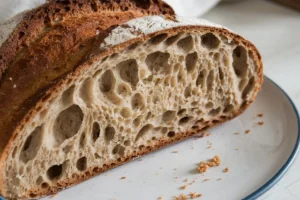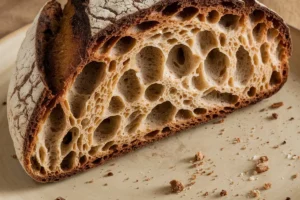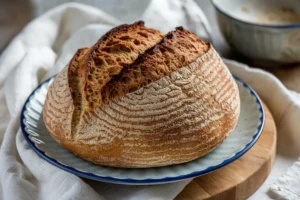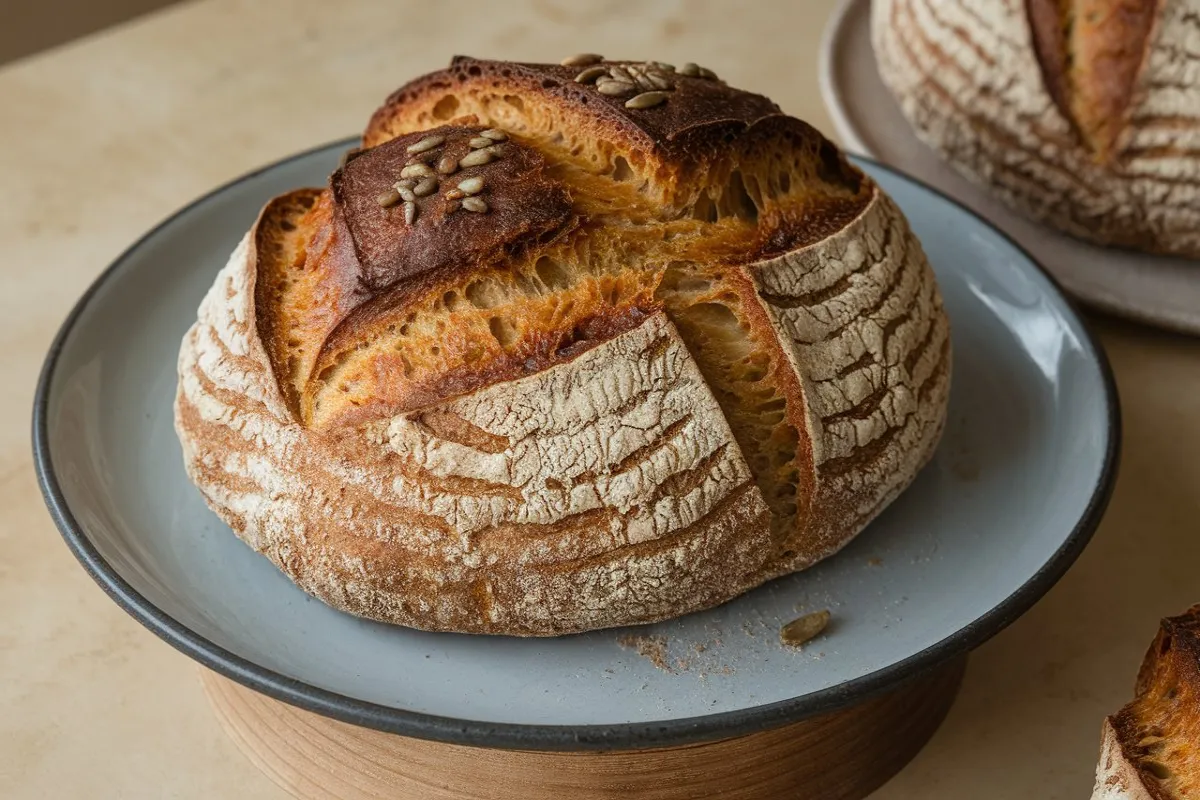As more people embrace sourdough baking, the inevitable challenge arises: what to do with the sourdough discard? While many find creative ways to use it in recipes like pancakes and crackers, fewer know that this seemingly wasteful byproduct can be repurposed into a valuable resource for the garden. The question, then, is: can sourdough discard be used as fertilizer? The short answer is yes, but with some nuances. In this article, we will explore how sourdough discard can enhance your soil, boost plant health, and contribute to more sustainable gardening practices.
What Is Sourdough Discard?
Before delving into its use as fertilizer, it’s important to understand what sourdough discard is. Sourdough discard is the portion of the starter that is removed to make room for fresh flour and water during regular feedings. It’s rich in microbes, including natural yeasts and bacteria, which are essential for fermentation. This microbial composition is also what makes it potentially beneficial for soil health.
Though many people throw sourdough discard away, doing so contributes to unnecessary food waste. Finding a way to reuse it, particularly in gardening, not only closes the loop in sustainable kitchen practices but also enhances the nutrient content of the soil.
Why Sourdough Discard Works as Fertilizer

The secret behind the fertilizer potential of sourdough discard lies in its microbial content. When added to the soil, these microorganisms promote healthy microbial activity, which is crucial for nutrient cycling and plant growth. Sourdough discard is full of:
- Lactobacilli: These beneficial bacteria help break down organic matter and promote nutrient absorption.
- Yeasts: They encourage the growth of healthy soil fungi, which can support root development and disease resistance.
- Enzymes: These aid in decomposing organic matter and releasing nutrients into the soil.
For these reasons, sourdough discard can be a great addition to your compost pile or garden bed. It provides a natural boost to soil fertility and can improve plant health in a sustainable, zero-waste way. For more detailed information, check out this guide on composting sourdough discard.
Methods for Using Sourdough Discard in the Garden
There are several effective ways to incorporate sourdough discard into your gardening routine. Whether you want to use it directly, in compost, or as a liquid fertilizer, it offers plenty of versatility.
1. Direct Application to Soil
One of the simplest ways to use sourdough discard is to apply it directly to the soil. However, it’s crucial to use small amounts at a time to avoid overwhelming the soil with excess moisture or microbes, which could lead to imbalances or mold growth. Follow these steps for direct application:
- Dig a small hole or trench in the soil near the base of your plants.
- Pour a thin layer of sourdough discard into the hole.
- Cover the discard with soil and water the plant lightly.
This method works well for outdoor plants but should be used sparingly. The beneficial microbes in the sourdough will enrich the soil over time, improving the overall nutrient profile.
2. Adding Sourdough Discard to Compost
Composting sourdough discard is one of the best ways to ensure it breaks down fully and releases its nutrients in a balanced manner. When added to a compost pile, the yeasts and bacteria in the discard help speed up the decomposition of other organic materials.
Here’s how to add discard to compost effectively:
- Break the discard into smaller chunks to increase its surface area.
- Add it to the compost pile along with brown materials like dried leaves or paper to balance the moisture content.
- Regularly turn the compost to ensure even distribution and avoid clumping.
Composting sourdough discard is especially beneficial for those who produce a large amount of it. The microbes will not only enrich the compost but also support the breakdown of other organic matter. This leads to richer, more fertile soil that can be used throughout your garden. Learn more about how sourdough starter benefits plants.
3. Diluting Sourdough Discard for Liquid Fertilizer
For a more immediate application, you can dilute sourdough discard to create a liquid fertilizer. This method allows for the microbes and nutrients to be absorbed quickly by the plants without risking overloading the soil.
To create sourdough discard liquid fertilizer:
- Mix 100g of sourdough discard with 1 liter of water.
- Let the mixture sit for a few hours to allow the microbes to activate.
- Water your plants with the mixture, either directly on the soil or through bottom watering for indoor plants.
The advantage of liquid fertilizer is that it provides a quick nutrient boost, particularly to plants that are struggling or need an extra push during the growing season.
4. Drying Sourdough Discard for Soil Conditioning
Another way to use sourdough discard is by drying it and using it as a long-term soil conditioner. Dried discard can be ground into a fine powder and mixed into the soil, where it will gradually release nutrients over time.
Steps for drying sourdough discard:
- Spread the discard on a baking sheet in a thin layer.
- Leave it to air-dry or bake it at a low temperature (around 100°F) until fully dried.
- Once dry, break the discard into small pieces or grind it into powder using a food processor.
- Sprinkle the dried discard around plants or mix it into the soil when planting.
This method is ideal for those who want to enrich their soil consistently over time without the risk of overwatering or mold. It can be particularly effective in large garden beds or raised beds where soil fertility needs to be maintained long-term.
Additional Garden Uses for Sourdough Discard

In addition to its role as a fertilizer, sourdough discard can also be repurposed in other ways within the garden.
Feeding Backyard Chickens
For those who keep chickens, sourdough discard can be a healthy addition to their diet. Chickens love the taste, and the probiotics in the discard can benefit their digestive health. What’s more, chicken manure is a nutrient-rich addition to compost, creating a cycle of sustainability in your backyard.
Vermiculture: Feeding Worms
If you maintain a worm farm or vermicompost system, small amounts of sourdough discard can be an excellent addition. The worms will break down the discard into rich compost, full of the microbes your plants need. However, be cautious not to overfeed the worms, as sourdough discard is quite wet and can disrupt the moisture balance in your worm farm.
Adding to Bokashi Composting
For gardeners practicing bokashi composting, sourdough discard can be a valuable addition. Bokashi is an anaerobic composting system that ferments food waste, breaking it down faster than traditional composting. The microbes in sourdough discard can help speed up the fermentation process, creating nutrient-rich compost that can be added to the soil in just a few weeks.
Benefits and Precautions of Using Sourdough Discard
Benefits of Sourdough Discard as Fertilizer
- Cost-effective: Using sourdough discard as fertilizer is a free, easy way to enrich your soil.
- Rich in microbes: The bacteria and yeasts in sourdough help promote healthy soil microbial communities, which in turn help plants thrive.
- Eco-friendly: Reusing sourdough discard reduces kitchen waste and promotes sustainable gardening practices.
- Versatile: Whether you’re composting, making liquid fertilizer, or adding it directly to the soil, sourdough discard offers a variety of uses.
Precautions
Though sourdough discard is generally safe for the garden, there are some precautions to keep in mind:
- Don’t over-apply: Applying too much sourdough discard, especially in its raw form, can overwhelm the soil and lead to mold or nutrient imbalances.
- Avoid salty discard: If your sourdough starter contains salt, use it sparingly, as too much salt can harm plants, especially those sensitive to high sodium levels.
- Monitor plant reactions: Different plants respond differently to microbial fertilizers. Start with small amounts and observe how your plants react before increasing the frequency or quantity.
Which Plants Benefit the Most?
Certain plants respond particularly well to the nutrients in sourdough discard, especially those with high nutrient demands. Vegetables such as tomatoes, peppers, and leafy greens will thrive with the microbial boost. Flowering plants like roses and geraniums can also benefit from the regular application of microbe-rich fertilizers. Be cautious when applying sourdough discard to delicate plants or those that prefer low-nutrient soils, such as cacti and succulents.
FAQs: Using Sourdough Discard as Fertilizer

Can sourdough discard attract pests?
If left exposed, sourdough discard could attract pests due to its sugar content. Burying it in the soil or compost minimizes this risk.
How often should I apply sourdough discard?
Apply diluted sourdough discard monthly during the growing season or more frequently in compost piles.
Is sourdough discard suitable for all plants?
Sourdough discard is generally beneficial for most plants, especially those that thrive on high microbial activity, like vegetables and flowering plants. However, avoid using it on plants that prefer low-nutrient or acidic soils, such as cacti, succulents, and some ferns.
Will sourdough discard harm my compost pile?
No, sourdough discard is actually a great addition to compost piles. The natural yeasts and bacteria in the discard can help speed up the decomposition process, enhancing the compost’s overall microbial diversity.
Conclusion
Incorporating sourdough discard into your gardening routine is a smart, sustainable practice that benefits both the environment and your plants. Whether you’re composting, making liquid fertilizer, or applying it directly to the soil, sourdough discard offers a cost-effective way to enrich your garden’s soil with beneficial microbes.
By using your sourdough discard as a natural fertilizer, you’re reducing kitchen waste and contributing to the health of your plants through eco-friendly gardening practices. It’s an easy, zero-waste solution that fits perfectly into any sustainable lifestyle.

